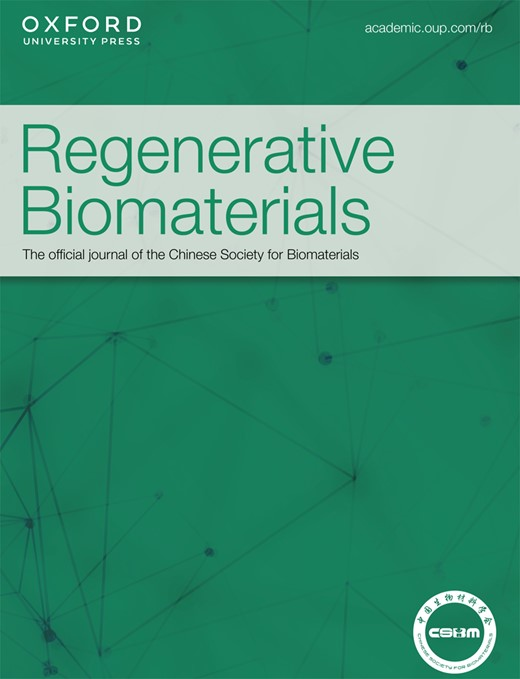Comparative time-dependent proteomics reveal the tolerance of cancer cells to magnetic iron oxide nanoparticles
IF 5.6
1区 医学
Q1 MATERIALS SCIENCE, BIOMATERIALS
引用次数: 0
Abstract
Cancer is one of the most common diseases in the world. Recently, iron oxide nanoparticles (IONPs) are emerging materials with rapid development and high application value, and have shown great potential on tumor therapy due to their unique magnetic and biocompatible properties. However, some data hint us that IONPs were toxic to normal cells and vital organs. Thus, more data on biosafety evaluation is urgently needed. In this study, we compared the effects of silicon-coated IONPs (Si-IONPs) on two cell types: the tumor cells (Hela) and the normal cells (HEK293T, as 293 T for short), compared differences of protein composition, allocation, and physical characteristics between these two cells. The major findings of our study pointed out that 293 T cells death occurred more significant than that of Hela cells after Si-IONPs treatment, and the rate and content of endocytosis of Si-IONPs in 293 T cells was more prominent than in Hela cells. Our results also showed Si-IONPs significant promoted the production of reactive oxygen species and disturbed pathways related to oxidative stress, iron homeostasis, apoptosis and ferroptosis in both two types of cells, however Hela cells recovered from these disturbances more easily than 293 T. In conclusion, compared with Hela cells, IONPs are more likely to induce 293 T cells death, and Hela cells have their own unique mechanisms to defense invaders, reminding scientists that future in vivo and in vitro studies of nanoparticles need to be cautious, and more safety data are needed for further clinical treatment.时间依赖性蛋白质组学比较揭示了癌细胞对磁性氧化铁纳米颗粒的耐受性
癌症是世界上最常见的疾病之一。氧化铁纳米粒子(IONPs)是近年来发展迅速、应用价值极高的新兴材料,因其独特的磁性和生物相容性,在肿瘤治疗方面显示出巨大的潜力。然而,一些数据提示我们,IONPs 对正常细胞和重要器官具有毒性。因此,迫切需要更多有关生物安全性评估的数据。在这项研究中,我们比较了硅涂层 IONPs(Si-IONPs)对两种细胞类型的影响:肿瘤细胞(Hela)和正常细胞(HEK293T,简称 293 T),比较了这两种细胞在蛋白质组成、分配和物理特性方面的差异。研究的主要结果表明,Si-IONPs 处理后,293 T 细胞的死亡比 Hela 细胞更显著,Si-IONPs 在 293 T 细胞中的内吞速率和含量比 Hela 细胞更突出。我们的结果还显示,Si-IONPs 显著促进了活性氧的产生,并干扰了两种细胞中与氧化应激、铁稳态、细胞凋亡和铁突变相关的通路,但 Hela 细胞比 293 T 细胞更容易从这些干扰中恢复过来。总之,与 Hela 细胞相比,IONPs 更容易诱导 293 T 细胞死亡,而 Hela 细胞则有自己独特的防御入侵者的机制,这提醒科学家们今后对纳米粒子的体内和体外研究需要谨慎,进一步的临床治疗需要更多的安全性数据。
本文章由计算机程序翻译,如有差异,请以英文原文为准。
求助全文
约1分钟内获得全文
求助全文
来源期刊

Regenerative Biomaterials
Materials Science-Biomaterials
CiteScore
7.90
自引率
16.40%
发文量
92
审稿时长
10 weeks
期刊介绍:
Regenerative Biomaterials is an international, interdisciplinary, peer-reviewed journal publishing the latest advances in biomaterials and regenerative medicine. The journal provides a forum for the publication of original research papers, reviews, clinical case reports, and commentaries on the topics relevant to the development of advanced regenerative biomaterials concerning novel regenerative technologies and therapeutic approaches for the regeneration and repair of damaged tissues and organs. The interactions of biomaterials with cells and tissue, especially with stem cells, will be of particular focus.
 求助内容:
求助内容: 应助结果提醒方式:
应助结果提醒方式:


